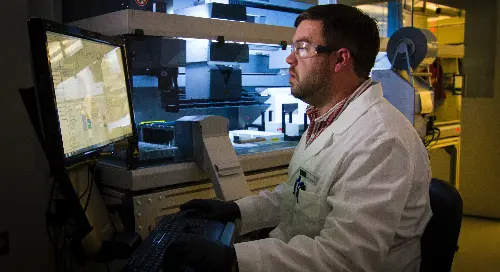When the Clinical Engineering Division of the International Federation for Medical and Biological Engineering (IFMBE) declared the first Clinical Engineering Day on October 21, 2016, it was in recognition of the growing importance of the community of men and women around the world who design and support the sophisticated equipment that plays a vital role in modern medicine. This year, Clinical Engineering Day is again on Wednesday, October 21, and held in collaboration with the World Health Organization (WHO) with an emphasis on the role of clinical engineers during the current global pandemic.
Four years ago, no one could have predicted that COVID-19 would have the world in its grip. Still, the medical devices created and supported by the community of talented clinical engineers have been key to mobilizing front line healthcare personnel in response to the crisis. No longer merely performing a specific task in the diagnosis, treatment, or monitoring of a patient, many of today’s medical devices are categorized as part of the Internet of Things (IoT) and are meant to function in a network that communicates and collects data. This data is critical for treating patients and helps inform physicians and other healthcare professionals.
Illustrating the importance of operating as a community of clinical engineers, after the COVID-19 outbreak became a global pandemic, the World Health Organization published technical specifications for how medical devices should be designed to operate more effectively in treating patients stricken by the disease. It’s vital, no matter where a piece of equipment is designed or made, that it is able to work together with other devices in its important mission.
As the pandemic spread and as cases spiked worldwide, field hospitals were quickly established in urban hotspots like Wuhan and New York City, and hospitals everywhere reconfigured to handle the expected surge in patients. They also had to rethink operations in order to keep healthcare workers and the general public safe. This was as much a technical exercise as it was a medical response, as equipment was moved to centralized locations and new communications networks established and populated with these devices, including equipment that had been mothballed for years in strategic reserves. Clinical engineering technicians mobilized to ensure that this equipment was functioning correctly and safely to provide the life-saving therapies needed to support the suffering patients.
The Wall Street Journal profiled how this new breed of medical equipment allowed several prominent hospitals to come up with new ways of not only treating patients but of carefully managing interactions with members of the public. That this was able to be accomplished in a matter of days was no accident, but a testament to the clinical engineers who designed the devices, and the clinical engineering technicians who support them. Their skill is at work behind the scenes ensuring that complex, life-saving equipment functions as designed.
Just as the need for rapid response to the spread of COVID-19 has prompted innovation in the biopharma industry that is working at breakneck speed to develop, test, and produce vaccines and other remedies to treat the disease, the hard-won experience of the pandemic will be reflected in the design of new devices on the drawing boards of clinical engineers today. That includes the security of medical devices, which is an important consideration for CIOs and CISOs charged with overseeing and securing the technical operations of hospitals, clinics, and other healthcare facilities.
As Director of Healthcare Product Management at Ordr, I know how important it is for us to play a role in that mission. Medical devices present certain challenges for IT management and security. They may have been state-of-the-art when first designed but are now functioning with obsolete software or operating systems that cannot be updated. Or they may be designed with limitations that prevent them from being easily discovered and managed once deployed. That’s where we come in. Ordr’s IoT security platform discovers and monitors the devices’ behavior and allows those organizations using them to keep them safe.
I hope you will join me in celebrating Clinical Engineering Day, and in saying “thank you” to the many talented individuals across the world who are hard at work designing and supporting a new generation of medical devices. You may never find yourself in need of one, but it’s nice to know that if you ever do, that you can count on it to operate safely and securely.
Join Michael Brilling, Manager, Clinical Engineering at Dartmouth-Hitchcock Health and I in a fireside chat on how to drive cross functional collaboration to protect IoMT Devices: https://us02web.zoom.us/webinar/register/WN_1f5qUninQASboy7WXu11Mg
Interested in Learning More?
Subscribe today to stay informed and get regular updates from Ordr Cloud




